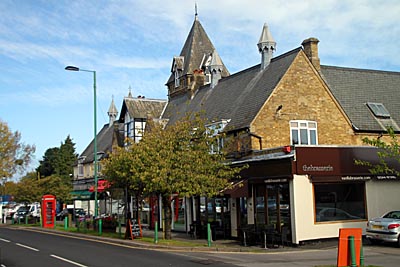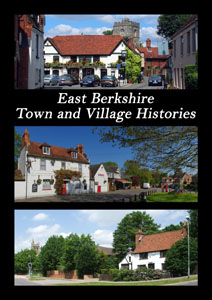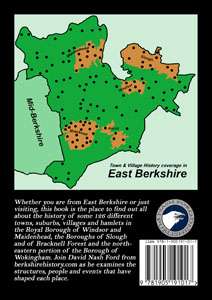 |
 |
||||||||
|
|
 Sunningdale SunningdaleRobbers, Writers & European Royalty Essentially meaning Sunna’s Valley, this place-name actually derives from Sunninghill Dale. It was one of the outposts of the followers of the supposed Anglo-Saxon chief, Sunna, whose settlements were centred on Sonning. They carved themselves a little village out of the wilds of Windsor Forest, always a risky area in which to live and even more so to travel through. Chobham Common and Bagshot Heath once stretched over much of Sunningdale. They were well known for bandits and were frequented by highwaymen as late as the early 19th century. The notorious Captain Snow is still commemorated in the name of Snow’s Ride. The village has always relied on the local transportation routes for its prosperity: from the London to Silchester road of Roman times, later known as the Devil’s Highway, to the modern A30. Broomhall Farm stands on the southern edge of Sunningdale in an area that was once a detached part of Sunninghill. It replaces a little known and, for much of its life, a rather a poor nunnery called Bromhall Priory. It was founded in the 12th century as a daughter house of Chertsey Abbey. The parish church, at the centre of the old village of Sunningdale, is somewhat more recent than the priory. The village was formerly in the southern portion of Old Windsor parish and villagers had to travel up to the church in Old Windsor until 1840. The present building was put up between 1860 and 1887. The church is best known for its monument to Queen Victoria’s half-nephew, the German Prince Victor of Hohenlohe-Langenburg. He was a well-known 19th century sculptor who, under the name of Count Gleichen (which was actually his wife’s title), modelled such pieces as King Alfred’s statue in Wantage. He had run away from school in his native land and was sponsored to enter the Royal Navy by the Queen. He eventually became an admiral, before turning to more artistic means of earning a living whilst in retirement. He lived at St Bruno House in Charters Road.Sunningdale Park is a Civil Service College. The Georgian-style mansion at its centre is now known as Northcote House and is used as an event venue. Despite its classical style it was only built in 1931. Agatha Christie lived at the house called Scotswood in Devenish Road in Sunningdale in the 1920s and then moved to Styles in Charters Road, which was named after her first mystery novels. It was from this house that she herself mysteriously disappeared for eleven days before being discovered at the Harrogate Hydro. Sunningdale Golf Course features in one of her short stories, Tommy and Tuppence Beresford’s ‘The Sunningdale Mystery,’ originally published as part of ‘Partners in Crime’ in 1929. Although the entrances to the famous Sunningdale Golf Club and Sunningdale Ladies’ Golf Club are now in Berkshire, most of these two golf courses are in Surrey. The ladies’ club is the oldest such club in the country and originally started out at Dormy House (now a care home). A small portion of Northern Sunningdale, on the southern shores of the Virginia Water, is within the bounds of Windsor Great Park. However, Fort Belvedere and the ruins of Leptis Magna which were erected as follies in the surrounding landscape are both over the border in Surrey. Read more history of Sunningdale in David Nash Ford's book, 'East Berkshire Town and Village Histories'. Click to Order direct from the Author.
|
||||||||
| © Nash Ford Publishing 2005; Revised 2020. All Rights Reserved. | |||||||||




